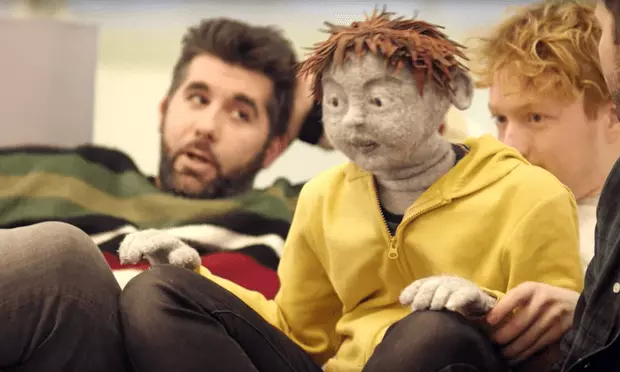Why ‘All In A Row’ is the Worst Kind of Autism Awareness
When it comes to the representation of autistic people in the media, it’s a topic for which I usually choose to keep my powder dry. I instead choose to listen to the voices of people with autism and signal boost when and where I feel I can be of help. On this occasion I’ve chosen to write about the subject because it’s on a topic I am at least partially qualified to weigh in on with some experience, that being the representation of a family with an autistic child. It concerns a new theatre play called ‘All In A Row’.
What is ‘All In A Row’?
All In A Row is a new theatre production debuting at the Southwark Playhouse written by Alex Oates, directed by Dominic Shaw and starring Charlie Brooks (Janine from Eastenders) and Simon Lipkin. It depicts a family living with an 11 yr old child with ‘severe’ autism who is described as “autistic, non-verbal and occasionally violent”.
What’s wrong with ‘All In A Row’?
There has been a lot of coverage in the press, not all of it particularly helpful, but the main issue is that the character of the autistic child, Laurence, is played by a puppet. Actually, let me stop there. This is a troubling over-simplification. We’ve seen positive representation of autistic characters using puppets, for example Julia from Sesame Street has been a great way for children to grasp the concepts of difference and how everyone can play together even if some people don’t think and act in a way we’re familiar with.
The real issue with the use of a puppet to depict an autistic child in this play is that, in a full cast of human beings, a puppet is used to depict an autistic child. No other characters are depicted using puppets. No other autistic characters are depicted by living, breathing humans. In a play about the emotions of people, the central autistic character is reduced to an object. They are de-humanised.
When you build a narrative about the experiences of living with an autistic child and then represent that character with an object, what you’re saying is “This character has no feelings”. That the real focus is on the feelings of everyone around that character and in doing so you turn that character into nothing more than a prop for everyone else to react to. It’s no longer a family living with a thinking, feeling child and becomes about the rest of the family dealing with the difficulties of caring for a ‘challenging creature’.

Have you seen the play?
In the spirit of full disclosure, it is important for me to state that I, like many of the play’s detractors, have not seen the play. I don’t need to see the play because, irrespective of production quality, acting, set design or even the sensitivity with which the subject is treated the whole premise is fundamentally flawed from the offset. When you create a play about real situations and declare proudly that these are issues of real relevance hoping that it draws people to your production, to then switch out the central figure relevant to that depiction turns your carefully crafted production into little more than a sideshow.
It doesn’t matter if the audience is pointing and laughing or clutching their pearls with pity. You’ve created a sick parody of reality for people to go and experience the spectacle of hardship whilst divorcing them from any likelihood of understanding that scenario from the perspective of the child.
How do you feel qualified to comment on this?
I’m commenting as a person who is living a very real version of the scenario depicted in the play. I’m the father of a 7 yr old with what most would consider ‘severe’ autism (severe is in inverted commas because it’s not a truly representative term but I’m at a loss for anything more specific). Morgan has what are often referred to as ‘challenging’ behaviours including emotional instability, sleep problems, physical and verbal aggression, seizures, etc. They aren’t the whole person though. He also has a huge capacity for compassion, love and generosity. He’s fiercely protective of his brother and sister. His speech can be heavily dominated by scripting and repetition but he’s also way smarter than he lets a lot of people know so he’s almost always underestimated.
He is a part of our family and as such an equal part of our story. I’d be lying if I said that it’s ever really been easy for us to adapt to everything that Morgan needs but that hasn’t stopped us fighting every day to make sure he has it, whether that be from education, from healthcare or just making sure he knows he has a loving home.
I’ll make no bones about it, Morgan has changed how we approach nearly every situation that we deal with as a family. There are things we can’t do, places we can’t go, everything is logistically an order of magnitude more complex. We have to work with his brother and sister so that they know that although Morgan sometimes demands more of our attention that our love for all of them is equal. They know Morgan’s experience might be different and that some things can be more difficult for him but at the end of the day, to them he’s just their brother and they see him the same way they see each other.
Morgan has never been ‘something to deal with’. He’s a member of our family and we work hard to make sure he is heard.

How could this have been done better?
There are a lot of views being shared on how this could have been done better. The puzzling thing is that there are so many better ways to have done this that it’s mind-boggling that this is the route they took. First and foremost, the autistic child should have been played by a human being, that should go without saying. I’ve heard the arguments for the ‘unique’ ways that using a puppet let’s the writers ‘open up the conversation’ but that’s all just a cowardly way to say “Using an actual person for this role would present a character too complex to fit into what we’re trying to say, so we’ve used an object instead.”
Secondly this should have been done in a way that opened the audience to the experience of the autistic child, not just everyone else’s reaction to them as some sort of helplessly erratic goblin. Autistic children CAN have challenging, even destructive behaviours but at the centre of every meltdown or thrown chair is a living, thinking, breathing PERSON and in those situations they are usually TERRIFIED. We owe it to them to portray the humanity that is so easily overlooked, not to exaggerate their shortcomings and dehumanise them into little more than a grotesque stuffed toy.
How have the play’s creators responded to the criticism?
The response has been predictably weak. A spokesman for the play said it was “untenable” to get autistic performers to play the part saying.
“We don’t think we could get informed consent from a non-verbal autistic actor aged 11 to play the role and additionally due to the law around employing children we’d need to actually have a minimum of three child actors for the role, as well as specialist, trained and licensed chaperones present at each performance.”
I can’t disagree that getting a severely autistic child to play the part would have been a great idea. Personally I’d worry about the stress that would put on the child or children that were put into that position. It may also mean that an autistic child is asked to repeat behaviours that they find embarrassing or distressing without grasping the context of what they were doing. There’s no mention from that spokesperson, though, of why using a human being was ‘untenable’.
Chris Smyrnios, artistic director of Southwark Playhouse defended the decision by saying:
“This was in the interest of child protection – the themes and some dialogue in the play are of an adult nature. Also there was a desire to honestly depict the challenges of caring for someone with Laurence’s particular behaviour and needs, which meant portraying a certain physicality that would be unsafe for a child performer.”
This seems like little more than the venue covering their backs. If the theme of living with autism is ‘of an adult nature’ then consider the hundreds of families that are experiencing that situation every day, well before the 9pm watershed. It’s also worrying that the production portrays “a certain physicality that would be unsafe for a child performer“. Does the production show the parents beating Laurence? Have they used a puppet so that they can more safely showcase the brutalising of an autistic child?
What happens now?
Well hopefully, given the abysmal response to this production, those involved in this should take a long look at where they went wrong. I’m not begrudging the good intentions that went into this but it was incredibly misguided to think that this was a great stride for autistic representation. Even if this production learns nothing, hopefully other companies looking to produce authentic, sensitive content will engage properly with autistic adults, children and their families before making another production like this one.
Like our content? Sign up here to get updated.





Great piece Leigh. I completely agree with your thoughts on this one.
Thanks Daddy P!
I am of course commenting having not seen the play. That said, I have worked for a charity that helped individuals at what could be termed the severe end of the spectrum and I just don’t think using an actor with severe autism would have been appropriate. Nonetheless, actors are there to act and I don’t see why a human actor without autism couldn’t have been used for the role? Again I say, I haven’t seen the play, but it does strike me as bizarre they’d used a puppet and I can apprecaite why you would find it upsetting.